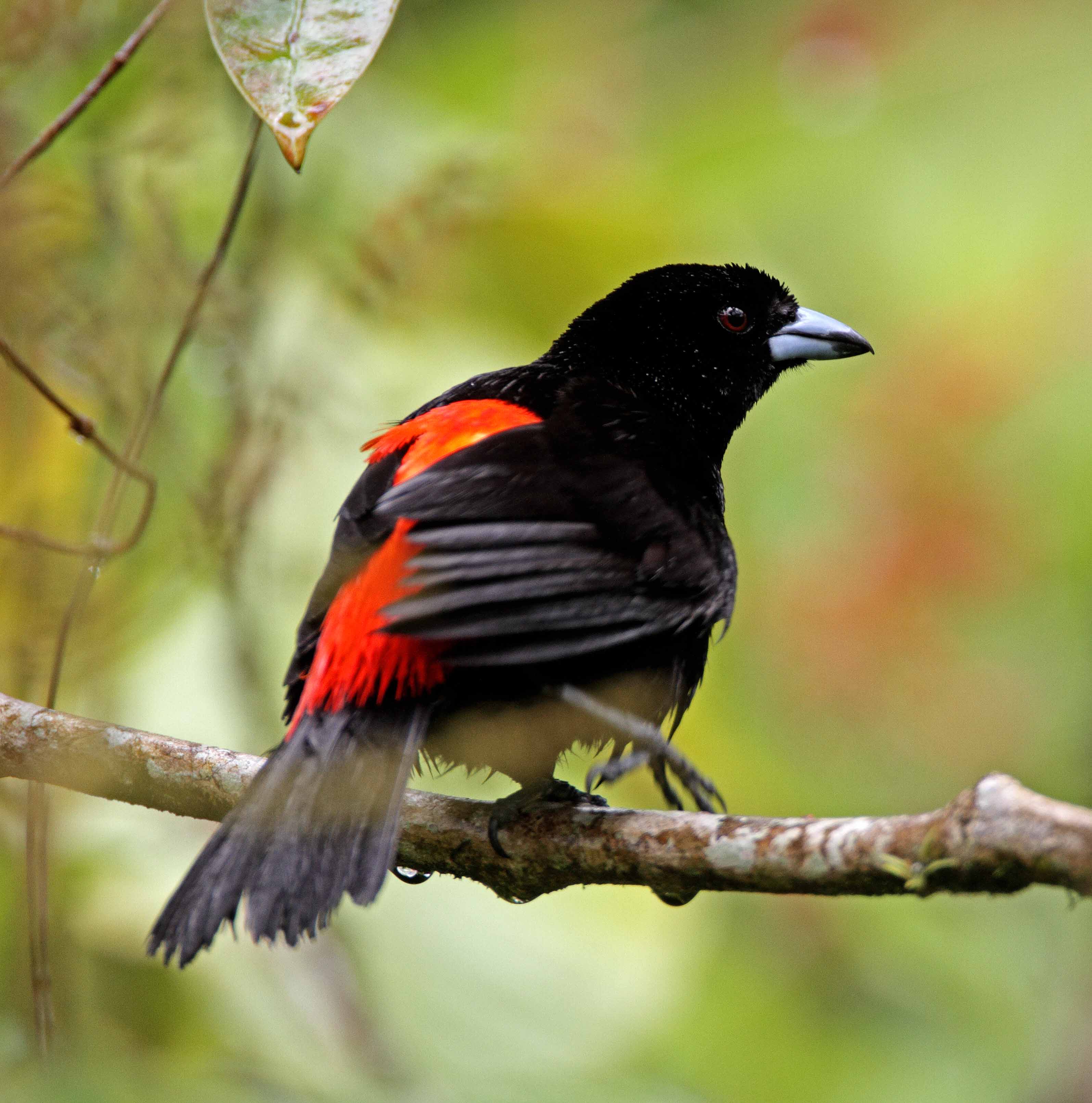

Helpless, eyes closed, with orange skin and small tufts of grayish white down on the head and back. Greenish blue to light blue speckled with chestnut, purplish red, and lilac. It has a shallow and asymmetrical interior space, lined with grass, fine rootlets, fine plant fibers, vine tendrils, and pine needles. The nest is a loosely woven saucer of twigs, grasses, plant stalks, bark strips, rootlets, and pine needles. She drops material onto the nest, hops in, and molds it into shape by pressing her body against the sides and bottom, then getting out and weaving in loose ends. The female gathers nesting material from the forest floor and builds a flimsy nest in 3–4 days, spending relatively little time on it each day. Scarlet Tanagers tend to nest in mature deciduous trees such as maple, beech, and oak, but they also nest in eastern hemlock. The site usually has an unobstructed view of the ground and open flyways from nearby trees. Nests are often fairly high (50 feet or more from the ground) on a nearly horizontal branch well away from the trunk. The female chooses the nest site, usually selecting a shaded spot within a cluster of leaves at a juncture of small branches. In the winter, they forage in mixed-species flocks with woodcreepers, flycatchers, barbets, and tropical tanagers. They swallow small larvae whole, but they kill larger prey by pressing it into a branch.

Scarlet Tanagers perch or hover with fast wingbeats to grab insects from leaves, bark, and flowers, and they catch flying insects like bees, wasps, and hornets from the air. While searching for these tidbits they walk along branches high in the canopy or (rarely) along the ground, or vertically on tree trunks to probe the bark. Their invertebrate diet includes ants, sawflies, moths, butterflies, beetles, flies, cicadas, leafhoppers, spittlebugs, treehoppers, plant lice, scale insects, termites, grasshoppers, locusts, dragonflies, dobsonflies, snails, earthworms, and spiders. Scarlet Tanagers eat mainly insects along with some fruit and tender buds. They range south as far as the Bolivian lowlands. Scarlet Tanagers winter in mature forests and forest edges in northern and western South America, mostly on hills and mountains. When they arrive in the southern United States coast in early spring they feed in shrubby vegetation, grassy fields, and on the ground. During spring and fall they use similar forest habitats as well as open spaces such as parks and gardens. Breeding Scarlet Tanagers prefer large forest tracts with large trees. In Canada they sometimes extend into boreal forests in stands of aspen, balsam poplar, and birch. They nest in oak, pine-oak, oak-hickory, beech, hemlock-hardwood, and occasionally pure eastern hemlock forests. Scarlet Tanagers breed in mature deciduous forests and mixed deciduous-coniferous forests in eastern North America.


 0 kommentar(er)
0 kommentar(er)
